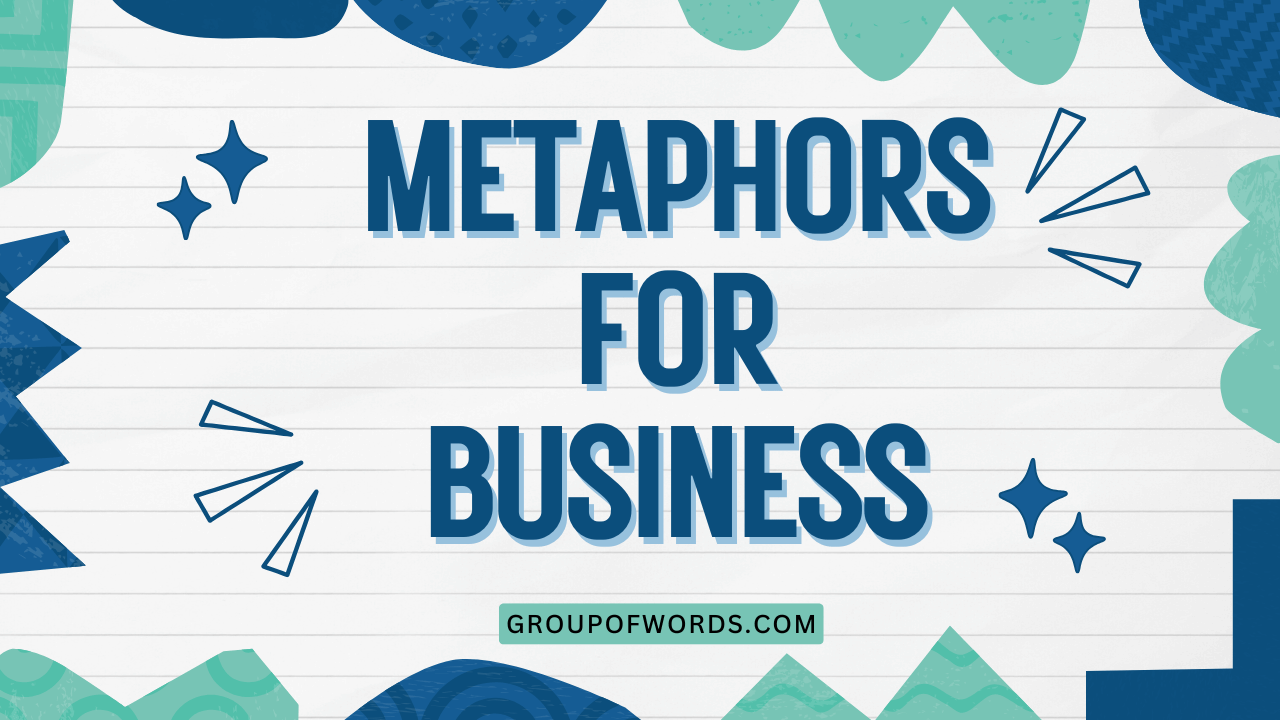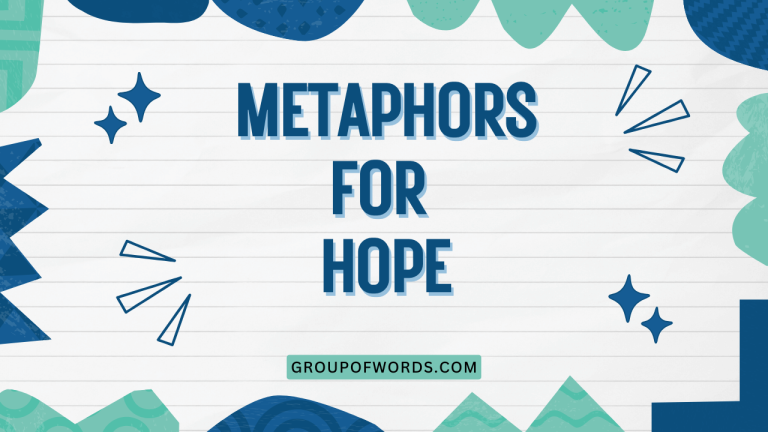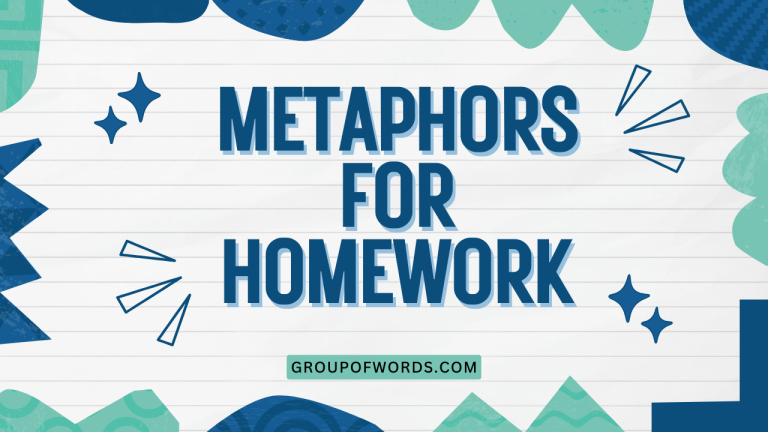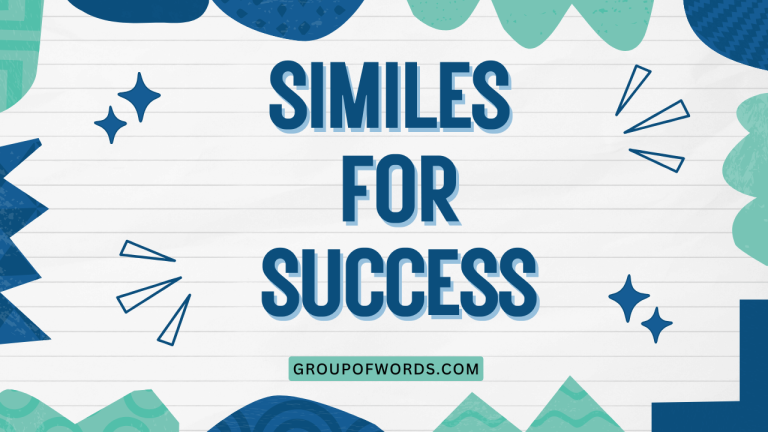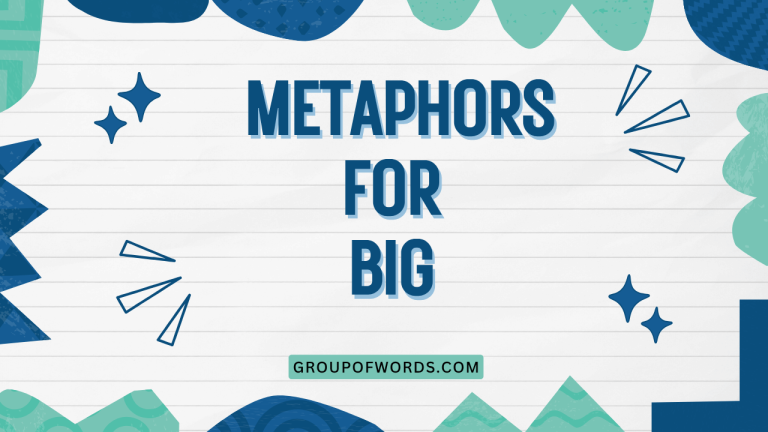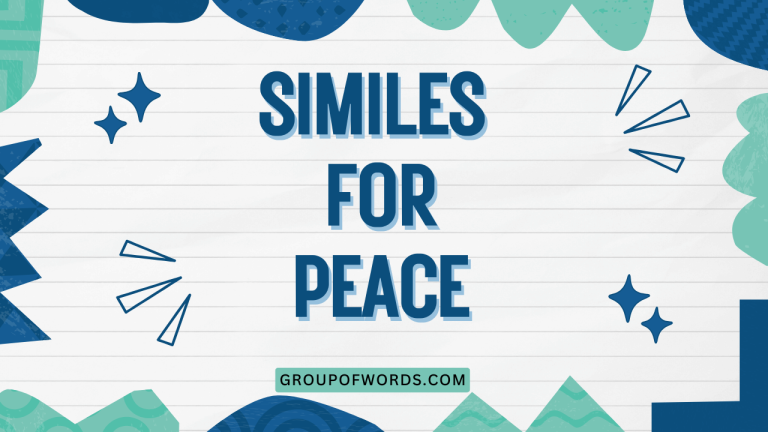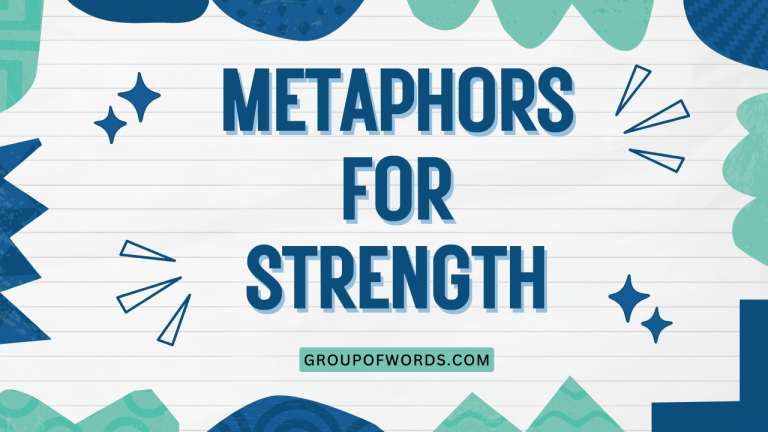Business as Usual: Mastering Metaphors in the Workplace
Metaphors are powerful tools that transcend mere linguistic flourish; they are integral to how we understand and communicate complex ideas, particularly in the dynamic world of business. Mastering the art of using and interpreting metaphors enhances communication, fosters creativity, and provides deeper insights into strategic thinking.
This article explores the multifaceted role of metaphors in business, providing a comprehensive guide for anyone seeking to improve their communication skills and gain a competitive edge. From defining the core concepts to exploring diverse examples and usage rules, this guide offers practical knowledge and exercises to refine your understanding and application of metaphors in a business context.
Whether you’re a seasoned executive, an aspiring entrepreneur, or a student of business, this guide will equip you with the tools to navigate the metaphorical landscape of the modern workplace.
Table of Contents
- Definition of Metaphors in Business
- Structural Breakdown of Business Metaphors
- Types and Categories of Business Metaphors
- Examples of Business Metaphors
- Usage Rules for Business Metaphors
- Common Mistakes with Business Metaphors
- Practice Exercises
- Advanced Topics in Business Metaphors
- Frequently Asked Questions
- Conclusion
Definition of Metaphors in Business
A metaphor is a figure of speech that directly compares two unlike things without using “like” or “as.” In business, metaphors are used to frame complex situations, strategies, and organizational structures in relatable and understandable terms. They help bridge the gap between abstract concepts and concrete understanding, facilitating better communication and decision-making. The core function of a business metaphor is to transfer characteristics from one domain (the source domain) to another (the target domain), illuminating aspects of the target that might otherwise remain obscure.
For example, describing a company as a “well-oiled machine” uses the characteristics of a machine – efficiency, coordinated parts, and smooth operation – to suggest that the company functions effectively. The power of a metaphor lies in its ability to create a vivid and memorable image, fostering shared understanding and alignment within an organization.
Effective use of metaphors can drive innovation, inspire employees, and shape a company’s culture.
Metaphors in business can also be classified based on their function. Some metaphors are primarily descriptive, helping to paint a picture of a situation. Others are explanatory, clarifying complex processes. Still others are persuasive, used to motivate and influence stakeholders. Understanding these different functions allows for a more strategic application of metaphors in various business contexts.
Structural Breakdown of Business Metaphors
The structure of a business metaphor involves two key elements: the tenor and the vehicle. The tenor is the subject to which metaphorical attributes are ascribed – the target domain. The vehicle is the source from which the metaphorical attributes are borrowed – the source domain. The relationship between the tenor and the vehicle is what gives the metaphor its meaning and impact.
Consider the metaphor “the market is a jungle.” Here, the tenor is “the market,” and the vehicle is “a jungle.” The attributes of a jungle – competition, danger, and survival of the fittest – are transferred to the market, suggesting a highly competitive and potentially hostile environment. Successfully constructing a metaphor involves carefully selecting a vehicle that resonates with the intended audience and accurately reflects the desired characteristics of the tenor.
Furthermore, the effectiveness of a metaphor depends on the degree of fit between the tenor and the vehicle. A strong metaphor has a clear and compelling connection between the two, while a weak metaphor may be confusing or irrelevant. The context in which the metaphor is used also plays a crucial role. A metaphor that works well in one situation may be inappropriate or ineffective in another. Therefore, careful consideration of the audience, the message, and the overall context is essential for successful metaphorical communication.
Types and Categories of Business Metaphors
Business metaphors can be broadly categorized based on the aspects of business they describe. Here are some common types:
Organizational Metaphors
These metaphors describe the structure, culture, or functioning of an organization. They often relate the organization to something familiar, such as a machine, a family, or an organism.
Strategic Metaphors
Strategic metaphors are used to frame strategic goals, plans, and approaches. They can provide a new perspective on competitive advantage, market positioning, and resource allocation.
Market Metaphors
These metaphors describe the dynamics of the market, including competition, customer behavior, and industry trends. They often use imagery of battlefields, ecosystems, or games.
Financial Metaphors
Financial metaphors are used to explain financial concepts, performance, and risk. They can relate financial matters to everyday experiences, such as weather, health, or navigation.
Leadership Metaphors
These metaphors describe the role, style, and impact of leaders. They often compare leaders to captains, shepherds, or architects.
Examples of Business Metaphors
Here are some detailed examples of business metaphors, categorized by type:
Organizational Metaphor Examples
Organizational metaphors are crucial for shaping internal understanding and external perception of a company’s structure, culture, and overall functioning. They can effectively convey complex ideas in a relatable manner.
The following table provides a range of examples, illustrating how different metaphors can highlight various aspects of an organization.
| Metaphor | Meaning | Example Sentence |
|---|---|---|
| Well-oiled machine | Efficient and smoothly functioning organization. | “Our company operates like a well-oiled machine, with each department working in perfect synchronization.” |
| Family | Supportive and collaborative environment. | “We pride ourselves on being a family, where everyone supports each other and works towards common goals.” |
| Ship | Organization moving towards a common destination. | “As the captain of this ship, I’ll navigate us through these challenging waters.” |
| Ecosystem | Interconnected and interdependent network. | “Our company is an ecosystem, where each team relies on the others for success.” |
| Pyramid | Hierarchical structure with clear levels of authority. | “The organization is structured like a pyramid, with clear lines of authority from top to bottom.” |
| Honeycomb | A structure where many individual cells (employees/teams) contribute to a larger whole. | “Each department functions as a cell in a honeycomb, contributing to the overall strength of the company.” |
| Orchestra | A group of individuals with different skills working harmoniously together. | “Our team is like an orchestra, with each member playing a crucial role in creating a beautiful symphony of success.” |
| Living organism | An organization that grows, adapts, and evolves over time. | “The company is a living organism, constantly adapting to the changing market conditions.” |
| Clockwork | Precise and predictable operation. | “The manufacturing process runs like clockwork, ensuring consistent quality and timely delivery.” |
| Army | Disciplined and coordinated workforce. | “Our sales team operates like an army, relentlessly pursuing new leads and closing deals.” |
| Garden | Nurturing and growth-oriented environment. | “We see our company as a garden where we nurture our employees and help them grow.” |
| Puzzle | Complex problem requiring careful analysis and collaboration. | “Solving this business challenge is like piecing together a complex puzzle.” |
| Brain | Centralized decision-making and coordination. | “The headquarters acts as the brain of the organization, coordinating all activities and making strategic decisions.” |
| Jigsaw | Interlocking pieces that form a complete picture. | “Each department is a piece of the jigsaw, and only when they work together do we see the complete picture.” |
| Tower | Strong foundation with potential for great height and visibility. | “We are building a business like a strong tower, founded on solid principles and with a vision to reach new heights.” |
| River | Constant flow of ideas, products, or services. | “Innovation is the river that flows through our company, constantly bringing new ideas and opportunities.” |
| Web | Interconnected network of relationships and dependencies. | “Our supply chain is a complex web, with each supplier playing a critical role in our success.” |
| Machine Learning Model | Adaptive, iterative, and data-driven process. | “Our strategy is like a machine learning model, constantly learning and adapting based on data and feedback.” |
| Construction Site | An organization that is in the process of constant development and improvement. | “Our company feels like a construction site, there’s always something being built or improved.” |
| Band | A group of individuals with different skills working harmoniously together towards a common goal. | “We’re like a band, each playing our own instrument, but all working together to create a great tune.” |
Strategic Metaphor Examples
Strategic metaphors help frame and communicate complex strategic concepts in a more accessible and engaging way. They can provide a new perspective on competitive advantage, market positioning, and resource allocation.
The following table showcases various strategic metaphors and their implications.
| Metaphor | Meaning | Example Sentence |
|---|---|---|
| Battlefield | Competitive environment with winners and losers. | “The market is a battlefield, and we need to be prepared to fight for our share.” |
| Chess game | Strategic planning and calculated moves. | “Our business strategy is like a chess game, requiring careful planning and calculated moves.” |
| Marathon | Long-term endurance and perseverance. | “Building a successful business is a marathon, not a sprint, requiring long-term dedication and perseverance.” |
| Mountain climb | Challenging journey towards a difficult goal. | “Achieving our strategic objectives is like climbing a mountain, requiring hard work and determination.” |
| Navigating a ship | Steering the company towards its goals. | “Our CEO is navigating the ship through turbulent economic waters.” |
| War | Aggressive competition and high stakes. | “We are engaged in a price war with our competitors.” |
| Race | Time-sensitive competition with a clear finish line. | “The development of this technology is a race against time.” |
| Hunt | Targeted pursuit of specific opportunities. | “Our sales team is on the hunt for new clients.” |
| Football game | Teamwork, strategy, and execution. | “Our marketing campaign is like a football game, requiring teamwork, strategy, and precise execution.” |
| Symphony | Harmonious integration of different elements. | “Our business strategy is a symphony, where each department plays a crucial role in creating a harmonious whole.” |
| Garden | Cultivating growth and development. | “We are gardening our new market segment, nurturing it for future growth.” |
| Building a house | Step-by-step construction and careful planning. | “Implementing this new system is like building a house, we need to lay a solid foundation first.” |
| Embarking on a journey | Exploring the unknown. | “We are embarking on a journey into new markets.” |
| Planting seeds | Investing in future growth. | “We are planting seeds with these new initiatives; we hope to see them grow in the coming years.” |
| Weathering the storm | Surviving a difficult period. | “We are weathering the storm of the economic recession.” |
| Hitting a home run | Achieving a major success. | “Launching this product was like hitting a home run; sales have skyrocketed.” |
| Dancing | Agility and responsiveness to market changes. | “We need to be able to dance with the market, adapting quickly to changes.” |
| Fishing | Patiently waiting for opportunities. | “We are fishing for new opportunities in emerging markets.” |
| Climbing a ladder | Advancing gradually towards a goal. | “We’re climbing the ladder of success, one step at a time.” |
| Rolling the dice | Taking a calculated risk. | “Investing in this startup is like rolling the dice, but the potential reward is significant.” |
Market Metaphor Examples
Market metaphors are powerful tools for understanding and communicating the complex dynamics of the marketplace. They help to frame competition, customer behavior, and industry trends in relatable terms.
The table below provides a range of examples, illustrating how different metaphors can illuminate various aspects of the market.
| Metaphor | Meaning | Example Sentence |
|---|---|---|
| Jungle | Competitive and dangerous environment. | “The market is a jungle; only the strong survive.” |
| Ocean | Vast and unpredictable market with many opportunities and dangers. | “The market is a vast ocean, full of opportunities but also sharks.” |
| Ecosystem | Interconnected and interdependent network of players. | “The tech market is an ecosystem, where different companies rely on each other.” |
| Battleground | Intense competition and rivalry. | “The smartphone market is a fierce battleground.” |
| Wild West | Unregulated and chaotic market. | “The cryptocurrency market is like the Wild West, with little regulation and high risk.” |
| Gold rush | A sudden influx of participants trying to capitalize on a new opportunity. | “The AI boom is like a gold rush, with companies scrambling to invest.” |
| Feeding frenzy | Intense competition for limited resources. | “The bidding war for the company turned into a feeding frenzy.” |
| Playing field | Fair and competitive environment. | “We want to create a level playing field for all competitors.” |
| Wave | A trend or surge in popularity. | “We are riding the wave of sustainable products.” |
| Game | Strategic interaction between players. | “The market is a game, and we need to know the rules to win.” |
| Minefield | Market with hidden risks and challenges. | “Entering this new market is like walking through a minefield.” |
| Dance | Dynamic and responsive interaction with market trends. | “We need to dance with the market, adapting to its ever-changing rhythms.” |
| Chessboard | Strategic positioning and tactical moves. | “Our marketing strategy is like a chessboard, we need to anticipate our competitors’ moves.” |
| Safari | An expedition to find new opportunities. | “We are on a safari to discover new markets.” |
| Garden | Cultivating customer relationships and brand loyalty. | “We are gardening our customer base, nurturing relationships for long-term growth.” |
| Ebb and flow | The cyclical nature of market trends. | “The market experiences an ebb and flow, with periods of growth and contraction.” |
| Storm | A period of economic turmoil or market disruption. | “We are weathering the storm of the global recession.” |
| River | A constant flow of market trends and consumer demand. | “The market is a river, always flowing and changing direction.” |
| Race track | Fast-paced competition and innovation. | “The technology market is a race track, where companies are constantly striving to be the fastest.” |
| Theater | A stage where companies perform and compete for attention. | “The business world is a theater, and companies are actors vying for the audience’s attention.” |
Financial Metaphor Examples
Financial metaphors are used to simplify complex financial concepts and performance metrics, making them more accessible to a wider audience. They often draw parallels between financial matters and everyday experiences.
The following table provides examples of financial metaphors and their meanings.
| Metaphor | Meaning | Example Sentence |
|---|---|---|
| Rainy day fund | Savings for unexpected expenses. | “We need to build a rainy day fund to protect against economic downturns.” |
| Cash cow | A business or product that generates consistent profits. | “Our legacy product line is still a cash cow, providing a steady stream of revenue.” |
| Bleeding money | Losing money rapidly. | “The project is bleeding money, and we need to reassess its viability.” |
| Drowning in debt | Overwhelmed by debt. | “The company is drowning in debt and needs a financial restructuring.” |
| Bottom line | The net profit or loss. | “The bottom line is that we need to increase revenue and cut costs.” |
| Running on fumes | Operating with very little resources. | “The department is running on fumes due to budget cuts.” |
| Golden goose | A valuable asset that generates wealth. | “Our intellectual property is our golden goose, providing a competitive advantage.” |
| Iceberg | Hidden risks or liabilities. | “The financial statements only show the tip of the iceberg; there are hidden liabilities we need to investigate.” |
| Roller coaster | Volatile market conditions. | “The stock market has been a roller coaster this year.” |
| Tightening the belt | Reducing expenses. | “We need to tighten our belts and cut unnecessary spending.” |
| Full steam ahead | Aggressively pursuing growth. | “With strong profits, we are moving full steam ahead with our expansion plans.” |
| Sailing close to the wind | Taking financial risks. | “The company is sailing close to the wind with its aggressive investment strategy.” |
| Deep pockets | Significant financial resources. | “Our parent company has deep pockets, allowing us to invest in long-term projects.” |
| Money pit | A project or investment that consumes a lot of money without generating returns. | “The new marketing campaign became a money pit, yielding no tangible results.” |
| In the black | Profitable. | “After years of losses, the company is finally in the black.” |
| Red flag | A warning sign of financial trouble. | “The declining sales figures are a red flag that we need to address.” |
| Nest egg | Savings for retirement. | “We are building our nest egg for retirement.” |
| Underwater | Owning an asset that is worth less than the outstanding debt on it. | “Many homeowners are underwater on their mortgages.” |
| Balancing act | Managing competing financial priorities. | “Budgeting is a balancing act between investing in growth and maintaining profitability.” |
| Lifeblood | Something essential for survival or success. | “Cash flow is the lifeblood of any business.” |
Leadership Metaphor Examples
Leadership metaphors are used to describe the role, style, and impact of leaders, often comparing them to figures that evoke specific qualities and behaviors. These metaphors can influence how leaders are perceived and how they approach their responsibilities.
The following table provides examples of leadership metaphors and their connotations.
| Metaphor | Meaning | Example Sentence |
|---|---|---|
| Captain | Leader who guides and directs the team. | “Our CEO is the captain of the ship, steering us through challenging times.” |
| Shepherd | Caring and protective leader. | “A good leader is like a shepherd, guiding and protecting their flock.” |
| Architect | Visionary leader who designs and builds the future. | “The founder was the architect of the company’s success.” |
| Coach | Leader who trains and motivates the team. | “Our manager is a great coach, helping us develop our skills and reach our potential.” |
| Conductor | Leader who coordinates and harmonizes the team. | “The project manager is the conductor of the project, ensuring all the pieces work together.” |
| Gardener | Leader who nurtures and cultivates talent. | “A great leader is like a gardener, nurturing their team and helping them grow.” |
| General | Strategic and decisive leader. | “The CEO is a general, leading the company into new markets.” |
| Pilot | Leader who navigates complex situations. | “The experienced manager acted as a pilot, guiding the team through the crisis.” |
| Beacon | Inspiring and guiding leader. | “The company founder was a beacon of innovation.” |
| Bridge | Leader who connects different teams or departments. | “The liaison acted as a bridge between the engineering and marketing departments.” |
| Firefighter | Leader who resolves crises. | “The senior manager is a firefighter, always putting out problems.” |
| Trailblazer | Leader who pioneers new paths. | “The entrepreneur was a trailblazer in the tech industry.” |
| Anchor | Leader who provides stability and security. | “During the economic downturn, the CEO acted as an anchor for the company.” |
| Orchestrator | A leader who coordinates different elements to achieve a harmonious outcome. | “The CEO acted as an orchestrator, bringing different departments together to achieve a common goal.” |
| Catalyst | A leader who sparks innovation and change. | “The new CTO was a catalyst for innovation within the company.” |
| Transformer | A leader who brings about significant and positive change. | “The new CEO was a transformer, completely revitalizing the company.” |
| Visionary | A leader with a clear and compelling vision for the future. | “Steve Jobs was a true visionary, shaping the future of technology.” |
| Servant leader | A leader who prioritizes the needs of their team. | “Our manager is a servant leader, always putting our needs first.” |
| Warrior | A leader who fights for their team and their goals. | “The sales director is a warrior, always fighting for new deals.” |
| Philosopher | A leader who contemplates and guides with wisdom. | “The board chairman acted as a philosopher, guiding the company with wisdom and foresight.” |
Usage Rules for Business Metaphors
Using metaphors effectively in business requires careful consideration of several factors. Here are some key rules to follow:
- Clarity: Ensure the metaphor is easily understood by your audience. Avoid obscure or overly complex metaphors that may confuse or alienate.
- Relevance: Choose metaphors that are relevant to the context and the message you are trying to convey. The connection between the tenor and the vehicle should be clear and logical.
- Appropriateness: Consider the cultural and emotional connotations of the metaphor. Avoid metaphors that may be offensive, insensitive, or inappropriate for the situation.
- Consistency: Maintain consistency in your metaphorical language. Mixing metaphors can create confusion and weaken your message.
- Originality: Strive for originality in your metaphors. Overused metaphors can become clichés and lose their impact.
- Audience Awareness: Tailor your metaphors to your audience. What resonates with one group may not resonate with another.
- Avoid Mixed Metaphors: Mixing metaphors can create confusion and weaken your message. For example, “We need to nip this in the bud before it snowballs” combines two unrelated images.
- Consider Cultural Sensitivity: Be aware of cultural differences in metaphor interpretation. A metaphor that works well in one culture may be confusing or offensive in another.
In addition to these rules, it’s important to be mindful of the potential limitations of metaphors. While metaphors can be powerful tools for communication, they are not a substitute for clear and precise language.
Over-reliance on metaphors can lead to ambiguity and misinterpretation. Therefore, it’s essential to use metaphors judiciously and to supplement them with concrete examples and data.
Common Mistakes with Business Metaphors
Several common mistakes can undermine the effectiveness of business metaphors. Recognizing and avoiding these pitfalls is crucial for clear and impactful communication.
| Mistake | Incorrect Example | Correct Example | Explanation |
|---|---|---|---|
| Mixed Metaphor | “We need to nip this in the bud before it snowballs out of control.” | “We need to address this issue early before it escalates.” | Combining unrelated images creates confusion. |
| Cliché | “Let’s think outside the box.” | “Let’s explore unconventional solutions.” | Overused metaphors lose their impact. |
| Inappropriate Metaphor | “Our sales strategy is a nuclear bomb.” | “Our sales strategy is an aggressive campaign.” | Using an overly aggressive metaphor can be off-putting. |
| Unclear Metaphor | “The market is a purple elephant.” | “The market is a complex and unpredictable beast.” | The connection between tenor and vehicle should be clear. |
| Overused Metaphor | “We need to touch base on this issue.” | “Let’s schedule a meeting to discuss this issue.” | Avoid overusing common phrases, as they lose their impact. |
| Culturally Insensitive Metaphor | (Using a metaphor that is offensive or confusing in a particular culture) | (Using a culturally neutral or appropriate metaphor) | Be aware of cultural differences in metaphor interpretation. |
| Overly Complex Metaphor | “Our organizational structure is a fractal algorithm of interconnected nodes.” | “Our organizational structure is a network of interconnected teams.” | Keep metaphors simple and easy to understand. |
| Inconsistent Metaphor | “We need to sail this ship while also keeping our feet on the ground.” | “We need to navigate this project with careful planning and execution.” | Maintain consistency in your metaphorical language. |
| Misunderstood Metaphor | (Using a metaphor that the audience does not understand) | (Using a metaphor that is familiar and relevant to the audience) | Tailor your metaphors to your audience. |
| Lack of Context | “The project is a black hole.” | “The project is a black hole, consuming resources without delivering results.” | Provide enough context for the metaphor to be understood. |
Practice Exercises
Test your understanding of business metaphors with these exercises:
- Identify the metaphor in each sentence:
- The company is a well-oiled machine.
- The market is a jungle.
- Our sales team is on the hunt for new clients.
- The project is bleeding money.
- Our CEO is the captain of the ship.
- Explain the meaning of each metaphor:
- The company is a family.
- Our strategy is a chess game.
- The market is an ocean.
- Cash flow is the lifeblood of the company.
- Our manager is a coach.
- Rewrite each sentence using a more literal expression:
- We need to think outside the box.
- Let’s touch base on this issue.
- The project is a black hole.
- We need to tighten our belts.
- The market is a battlefield.
- Create your own metaphor for each of the following:
- A successful marketing campaign
- A challenging business problem
- An innovative product
- A strong company culture
- An effective leader
- Identify the type of metaphor used:
- The company is an ecosystem.
- Our strategy is a marathon.
- The market is a feeding frenzy.
- Cash flow is the lifeblood of the company.
- Our CEO is a shepherd.
Advanced Topics in Business Metaphors
Beyond the basics, several advanced topics can deepen your understanding and application of business metaphors:
- Cognitive Metaphor Theory: Explore how metaphors shape our thinking and perception of reality.
- Metaphorical Framing: Understand how metaphors can be used to frame issues and influence decision-making.
- Organizational Metaphors and Culture: Examine how metaphors reflect and shape organizational culture.
- Innovation and Metaphors: Discover how metaphors can stimulate creativity and innovation.
- Cross-Cultural Metaphors: Investigate the challenges and opportunities of using metaphors in a global context.
Delving into these advanced topics can provide a more nuanced understanding of the power and potential of metaphors in business. It can also help you to become a more effective communicator and strategic thinker.
Frequently Asked Questions
What is the difference between a metaphor and a simile?
A metaphor directly equates two unlike things (e.g., “The market is a jungle”), while a simile uses “like” or “as” to make a comparison (e.g., “The market is like a jungle”).
Why are metaphors important in business communication?
Metaphors help simplify complex concepts, create vivid images, and foster shared understanding. They can also be persuasive and motivational.
How can I avoid using clichés in my business communication?
Strive for originality and creativity in your metaphors. Think about the specific qualities you want to convey and choose metaphors that are fresh and relevant.
What should I do if my audience doesn’t understand my metaphor?
Provide additional context and explanation. If necessary, rephrase your message using a more literal expression.
Can metaphors be harmful in business?
Yes, if they are unclear, inappropriate, or culturally insensitive. It’s important to choose metaphors carefully and be mindful of their potential impact.
How do I create a good business metaphor?
Start by identifying the key characteristics of the concept you want to describe. Then, brainstorm potential metaphors that share those characteristics.
Choose the metaphor that is most clear, relevant, and appropriate for your audience.
Are there any tools that can help me find or create metaphors?
While there isn’t a specific “metaphor generator,” using a thesaurus can help you find related concepts and imagery. Also, paying attention to how others use metaphors in business can inspire you.
How do I know if a metaphor is overused?
If you hear the metaphor frequently in business contexts, it’s likely overused. Try to find a more original way to express the same idea.
Is it okay to use multiple metaphors in a presentation?
Yes, but be careful not to mix metaphors or overload your audience. Use metaphors strategically to highlight key points and maintain engagement.
How can I improve my skill in identifying metaphors?
Practice! Read business articles, listen to presentations, and pay attention to how people use language.
The more you expose yourself to metaphorical language, the better you’ll become at recognizing it.
Conclusion
Metaphors are indispensable tools in the business world, serving as bridges to understanding, catalysts for innovation, and cornerstones of effective communication. By mastering the art of crafting and interpreting metaphors, professionals can unlock new levels of insight and influence.
This guide has provided a comprehensive overview of business metaphors, from their fundamental structure to advanced applications. By adhering to the usage rules, avoiding common mistakes, and engaging in continuous practice, you can harness the full potential of metaphors to enhance your communication, leadership, and strategic thinking.
Embrace the power of metaphorical language, and transform the way you perceive and navigate the complex landscape of business.
